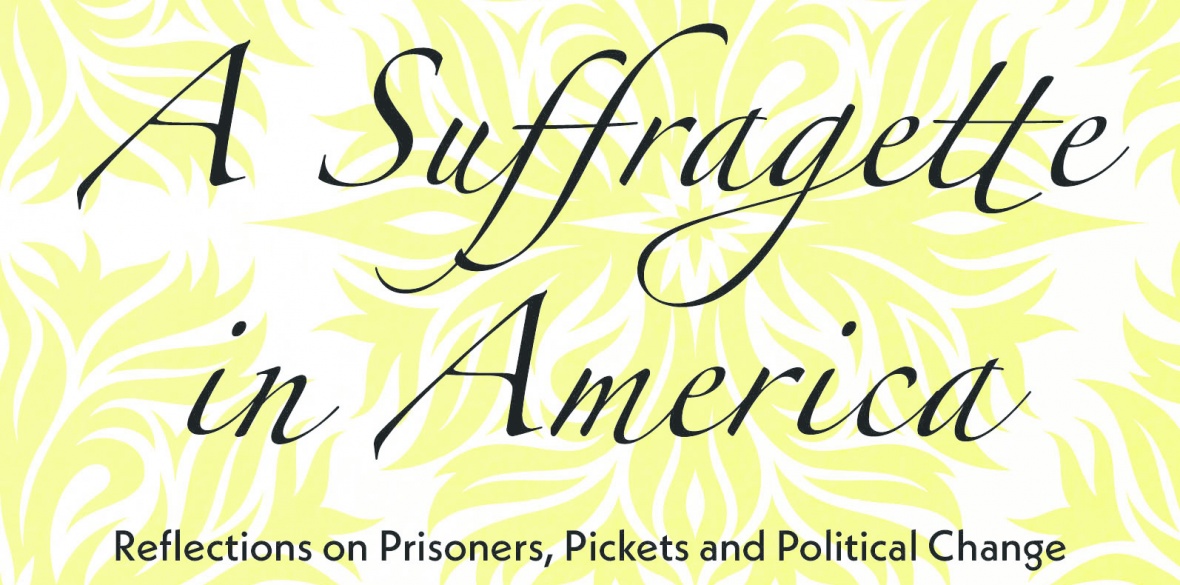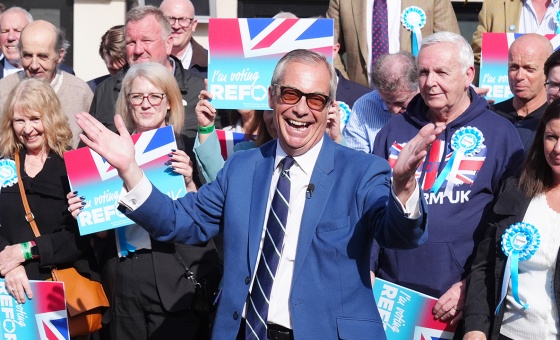This is the last article you can read this month
You can read more article this month
You can read more articles this month
Sorry your limit is up for this month
Reset on:
Please help support the Morning Star by subscribing here
KATE CONNELLY’S previous book on Sylvia Pankhurst, Suffragette and Scourge of Empire, was a terrific biography of an extraordinary woman — both scholarly and genuinely page-turning.
A second book on the same subject could have been de trop; in fact, A Suffragette in America is a work of singular importance.
The book is a joint work, comprising Pankhurst’s own previously unpublished writing about her two speaking tours in the United States, in 1911 and 1912, edited by Connelly and illuminated by the latter’s insightful commentary.
Pankhurst’s US manuscript is an extraordinary one; what I’d assumed to be a travel diary, Connelly reveals as a devastating and original critique of US capitalism.
Pankhurst’s work combines painstakingly compiled charts of wages and conditions in the country with oral history and experimental, novelistic passages.
Pankhurst, still only in her twenties, was coming to realise the vital importance of combining suffrage activism with socialism, anti-racism and anti-fascism with opposition to empire. The enactment of this cost her dearly, estranging her from her own family — but she never wavered.
What is particularly exciting about this book is that Connelly, guiding us skilfully through Pankhurst’s thoughts and reflections, shows that this was the very point at which Pankhurst was grappling with this understanding; her notes “show her workings,” in effect.
That Pankhurst was able to write at all with such an exhausting schedule of travel and public speaking in the US is astonishing; every day a new venue, sometimes a new state, and a new audience to address.
Connelly brings it all to life: deep-thinking Sylvia chafing under the patronage of bourgeois hosts with whom she could not have had less in common: “The ladies of Des Moines [in Iowa] had insisted I must not wear ordinary clothes, but must go in my cream silk evening frock … It seemed strange to me.”
The Kansas Women’s Dining Club bore the brunt of their guest’s frustration, and must have been taken aback to be informed over dinner that “bridge, balls, dinners — I think the women who gives their lives to such things as that ought to be swept off the face of the earth … I would love to be the one of those to do the sweeping.” To have been a fly on the wall!
Pankhurst would eventually refuse to participate any further in this social round, seizing control of her own schedule.
She was further tested by being out of touch with events at home. The Women’s Social and Political Union did not inform her when, in March 1911, it resumed militancy with a mass window-smashing campaign London’s West End, which culminated in her own mother’s arrest.
Questioned by the press, Pankhurst had to appear in the know but make it up as she went along.
The US media besieged her throughout both tours, turning nasty if she wouldn’t speak to them, publishing patronising pieces illustrated with caricatures of her as the posing, attention-seeking coquette she so manifestly was not.
Reporters little older than herself (Pankhurst was 28 at the time of her first tour in 1911, 29 during the second) variously put her age at 20 and 23, and claimed she had “the soft, pathetic voice [of a] girl of 12.”
The “slip of an English girl” resisted at all points. When reporters failed to record her words, she pointedly bought them notebooks and pencils.
In Missouri, her “pathetic” voice was evidently no hindrance to flattening in debate the US assistant attorney general, Isaac H Lionberger — all reports admitted Pankhurst was “quicker, witter and cleverer” than her opponent (afterwards, Lionberger’s own daughter gleefully thanked her for “taking father down”).
Connelly, herself only 33, undertook, on a shoestring, her own US tour to research the book, and follow in some of Pankhurst’s footsteps.
Speaking to her is a treat for the Pankhurst devotee: while Connolly resists the temptation to ventriloquise her subject, her deep understanding allows me to approximate an eager US reporter and bombard her with distinctly low-brow questions, which she bears patiently.
Connelly tells me she thinks Pankhurst’s class consciousness and sense of her duty to represent other woman enabled her to stay true to her political ideals, and deal with opprobrium she suffered for them, both in the US and much closer to home.
Middle class but not wealthy, Pankhurst lived as an artist and working woman. Subjected to arrests and force-feeding, she knew what it was to be at odds with, and in the power of, the Establishment.
Rather than feeling philanthropic pity for the vulnerable, Pankhurst related to them. She refused to trust the word even of US fellow suffragettes on working conditions in their country, insisting on seeing for herself: “When I first landed … I was told by numbers of people that women were not sweated here and that practically all the women factory workers were foreigners.
“Anyone who makes even a superficial investigation must soon learn, as I did, that such statements are untrue.”
The second chapter of Pankhurst’s US text is a detailed investigation into the horrors of US laundries, where women worked in terrible heat and toxic gas fumes, faces blasted by steam.
Pankhurst spoke directly to workers, like the girl of 15 who was the sole support of her entire family: siblings, a paralysed father and a partially sighted mother.
Pankhurst concluded that US workers were in some ways worse off than Britain’s, due to higher living costs — clothes, for example, were vastly more expensive.
In contrast to this, Pankhurst’s third chapter is, as Connelly writes, “lyrical and cryptic.”
In it, Sylvia writes of a children’s performance of Sleeping Beauty at a New York settlement: no travel-weary forced spectator, she is utterly swept away by the “fairy-tale princess, with long yellow hair falling to her knees,” dancing among forests before falling into her slumber, “with little soft grey and white figures around her. I thought they were evening shadows and flakes of snow.”
Pankhurst absorbed it all joyously, uplifted and restored for a while.
The final lines of this chapter are absolutely Sylvia: the artistic, creative socialist who is no utopian, whose heart breaks for the victims of capitalism for whom art can only ever offer a brief, shining escape: “Just a year afterwards I learned that little Sleeping Beauty had died from a lingering illness that began shortly after the festival — the one great joyous event of her short life.
“For months before she died, she had been unable to go out into the fresh air, for the tenement in which her family lived was up so many flights of stairs, and she so weak.”
With this book Connelly cements her status as one of our foremost experts on Pankhurst, and gives us a vital addition not just to the suffragette, but socialist canon.
Louise Raw organises the annual Matchwomen’s Festival, now in its seventh year and taking place on Saturday June 29 at Bow Arts, East London from 2pm. Speakers include Michael Rosen and Caroline Criado Perez. Tickets via Eventbrite.










